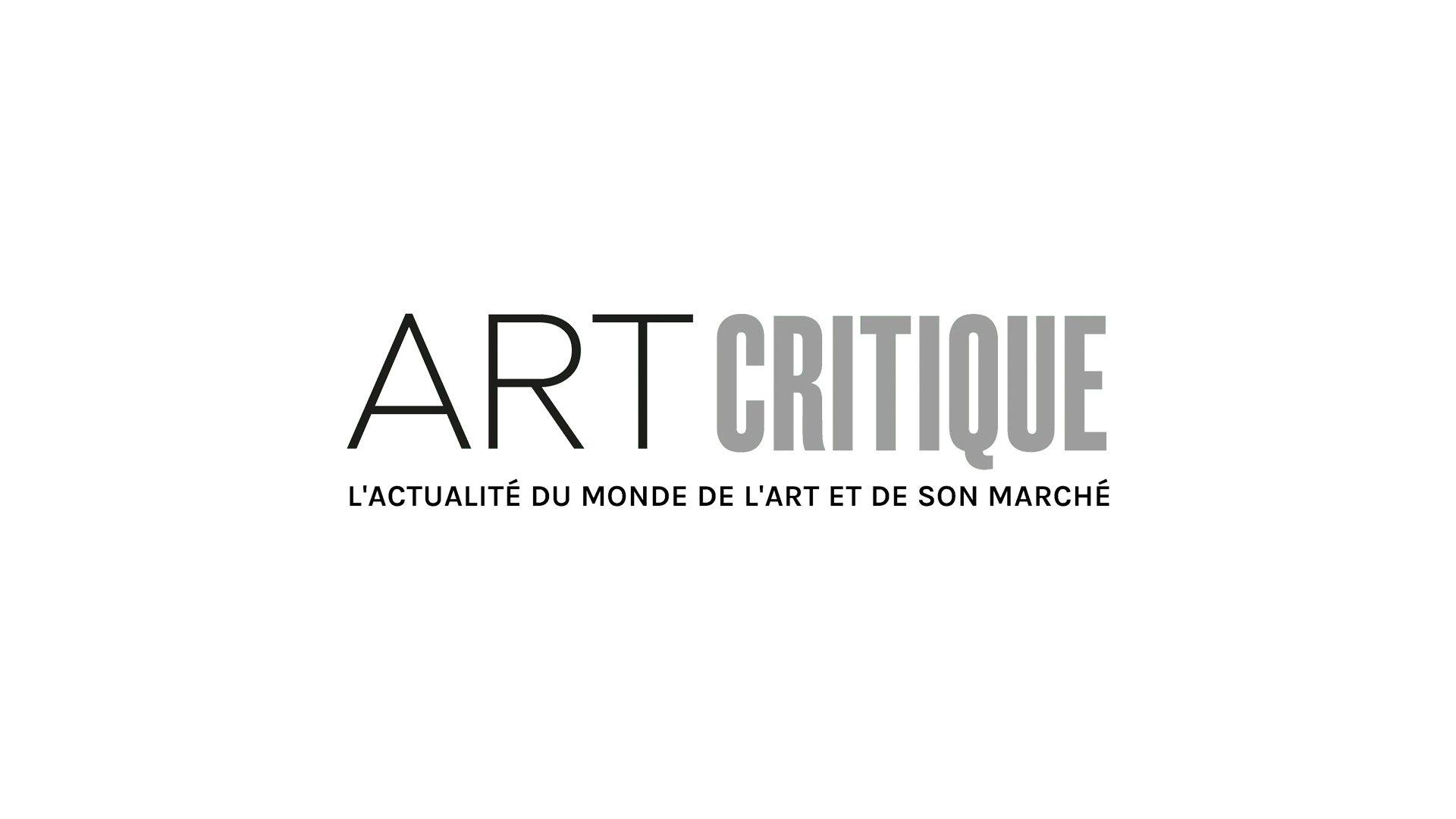Until February 23, Gallery Les Filles du Calvaire is hosting an exhibition of Emma Dusong’s work as a tribute to free speech.
The exhibition, located on the first floor of the gallery, begins with the projection of a still frame. As spectators reach the top of the stairs they are greeted by a miniature version of the artist whose fleeting but persistent image (it disappears then reappears each time the spectator steps in front of or away from the projector) declares the installation’s intention: to preserve that which is destined to disappear. Emma Dusong’s main medium is the voice and this piece also reveals an ongoing theme in her work. Immersed in a semi-darkness that pervades the entire exhibition, this small figure in a colorful dress hints at the artist’s other pieces that blend the innocence of childhood with the solemnity of adulthood.
The next piece, Classse, is visual and aural. It takes the form of 15 half-opened school desks lit from the inside. One of them plays a loop in a voice that is delicate but powerful enough to open the desk lid. As if to imitate a childhood nursery rhyme it chants, “When I think, I have more questions than answers”. This voice disrupts the classroom’s silence as the wide-open flap upsets the neat arrangement of the other desks. But after a few seconds the desk’s lid slams shut reducing the voice to silence. For six minutes the voice constantly raises the desk’s lid and nevertheless expresses its doubts. The insolence of the installation does not lie so much in the expression of its content as in its refusal to comply with the demands of silence and the rigidity of the education system, symbolized here by the aligned desks. This rejection of authority is made even more powerful when the artist, dressed in a school uniform, activates the device during performances. While singing, she puts her hands inside the desk as the lid opens and risks having it slam down on her fingers at any time. The determination to express oneself then becomes a struggle, as indicated by a red-coloured photo montage of the performance next to the installation,

This same, innocent but not naive, world is presented in the second installation. The piece, also six minutes long, is made up of three parts; two workbooks under Plexiglas hung on the wall, a video projected on the ground and a recording of the artist’s voice in the background. The six tracks (of six minutes each) relate to certain questions that the artist has reflected on in recent years and that she has meticulously written down in notebooks similar to those hanging on the wall. Amidst the trivial issues that arise in our daily routines hide even more profound questions about the impermanence of our lives. The video on the ground refers to the same dichotomy. It’s a simple yet complex image, white clouds slowly pass before a blue sky. Yet its arrangement on the ground prompts the viewer to contemplate whether it is an ordinary landscape or an object of infinite revelations.

The last piece is in a separate room. It is a 17-minute film made up of a succession of still shots filmed on location at the Maison Bernard. This house with round windows, in all curves and colours, was designed by architect Antti Lovag in the early 1960s and seems like something from a child’s imagination. In the first shot, the artist approaches us, sits on the rocks in the garden and starts singing. It’s a repetitive chant, an unarticulated language where a few words stand out such as “I defy” and “I dare”. Like in the first installation, it is unclear exactly what the artist is challenging but, in this case, the very act of speaking is a form of defiance. In the next shots, the artist, still singing, slowly crosses the screen to the next image. From shot to shot, we wander in the garden until we find ourselves behind her and follow her into the house. Within this organically shaped design, the mysterious text resonates even more strangely. After another shot viewers find themselves outside the house while the artist continues to cross from room to room. Finally, she disappears, leaves the screen silently while the house starts to sing. The voice and the place are now one, the words vanish, remaining only a voice that hums a melody that we suspect will stay in our heads long after leaving this captivating exhibition.






